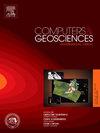Imputation in well log data: A benchmark for machine learning methods
IF 4.2
2区 地球科学
Q1 COMPUTER SCIENCE, INTERDISCIPLINARY APPLICATIONS
引用次数: 0
Abstract
Well log data are an important source of information about the geological patterns along the wellbore but may present missing values due to sensor failure, wellbore irregularities or the cost of acquisition. As a consequence, incomplete log sequences may impact the performance of machine learning (ML) models for classification or prediction. Although several approaches for this problem have been proposed in the literature, the lack of consistent evaluation protocols hinders the comparison of different solutions. This paper aims at bridging this gap by proposing a robust benchmark for comparing imputation ML methods. It contributes to establish a standardized experimental protocol that could be used by the petroleum industry in the development of new methodologies for this purpose. It differs from previous works that have been based on different datasets and metrics that prevent an unbiased comparison of results. Eight imputation methods were investigated: Autoencoders (AE), Bidirectional Recurrent Neural Network for Time Series Imputation, Last Observation Carry Forward (LOCF), Random Forests, Self Attention for Imputation of Time Series (SAITS), Transformers, UNet, and XGBoost. The Geolink, Taranaki and Teapot datasets were used to contemplate data from different locations, from which sequences of measurements were deleted and further imputed by the selected ML methods. The Mean Absolute Error, Mean Squared Error, Root Mean Squared Error, Pearson Correlation Coefficient and the Determination Coefficient were used for performance assessment in a set of 480 experiments. The results demonstrated that simple methods as the LOCF and the AE provided competitive imputation results, although the overall best model was SAITS. This reveals that self-attention models are a promising trend for imputation techniques. The choice for the LOCF, AE, SAITS, UNet, and XGBoost to compose the proposed benchmark was corroborated by subsequent statistical analyses, showing that it can be considered a compromise between simplicity, unbiasedness, variety and meaningfulness.
测井数据的插值:机器学习方法的基准
测井数据是了解井筒地质模式的重要信息来源,但由于传感器故障、井筒不规则或采集成本等原因,测井数据可能会出现缺失值。因此,不完整的日志序列可能会影响机器学习(ML)模型用于分类或预测的性能。虽然在文献中已经提出了针对该问题的几种方法,但缺乏一致的评估协议阻碍了不同解决方案的比较。本文旨在通过提出一个鲁棒的基准来比较插补ML方法来弥合这一差距。它有助于建立一个标准化的实验规程,供石油工业在为此目的发展新方法时使用。它不同于以前的工作,已经基于不同的数据集和指标,防止结果的无偏比较。研究了自编码器(AE)、用于时间序列imputation的双向递归神经网络(Bidirectional Recurrent Neural Network)、最后观测Carry Forward (LOCF)、随机森林(Random Forests)、用于时间序列imputation的自注意(SAITS)、Transformers、UNet和XGBoost等8种方法。使用Geolink、Taranaki和Teapot数据集来考虑来自不同位置的数据,从中删除测量序列,并通过所选的ML方法进一步估算。采用平均绝对误差、均方误差、均方根误差、Pearson相关系数和决定系数对480个实验进行性能评价。结果表明,尽管总体上最好的模型是SAITS,但LOCF和AE等简单的方法提供了有竞争力的估算结果。这表明自注意模型是一种很有前途的归因技术。随后的统计分析证实了对LOCF、AE、SAITS、UNet和XGBoost组成拟议基准的选择,表明它可以被认为是简单性、无偏性、多样性和意义之间的折衷。
本文章由计算机程序翻译,如有差异,请以英文原文为准。
求助全文
约1分钟内获得全文
求助全文
来源期刊

Computers & Geosciences
地学-地球科学综合
CiteScore
9.30
自引率
6.80%
发文量
164
审稿时长
3.4 months
期刊介绍:
Computers & Geosciences publishes high impact, original research at the interface between Computer Sciences and Geosciences. Publications should apply modern computer science paradigms, whether computational or informatics-based, to address problems in the geosciences.
 求助内容:
求助内容: 应助结果提醒方式:
应助结果提醒方式:


